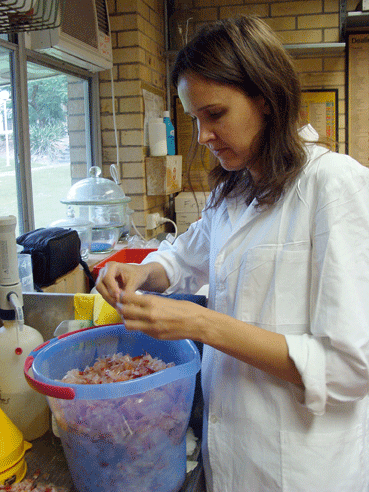
|
Published:
Creative waste solutions help the environment
Creative combinations of industrial and municipal waste can transform environmental problems into potentially marketable and environmentally beneficial products, according to the CRC for Contamination Assessment and Remediation of the Environment (CARE).

|
|
As part of the CRC CARE program, University of Queensland researchers are experimenting with using prawn shells in artificial soils to absorb heavy metals. Credit: CRC CARE
|
For example, by co-composting garden waste with inorganic waste such as coal fly ash, and organic waste such as biosolids from sewage treatment, poultry manure and grease trap effluent, scientists have produced quality composts suitable for use as potting mixes, garden mulches or specially manufactured soils.
Other combinations of materials can provide critical nutrients to crops or soils at low cost, produce topsoil replacement with a high water-holding capacity, or immobilise heavy metals in contaminated soil.
The technique can utilise a wide range of inorganic and organic wastes that can otherwise be difficult to dispose of, including steel slag, blast furnace slag, coal fly and bottom ash, red mud from bauxite processing, tree bark, sugar mill mud, spent brewery yeast and prawn processing waste.



